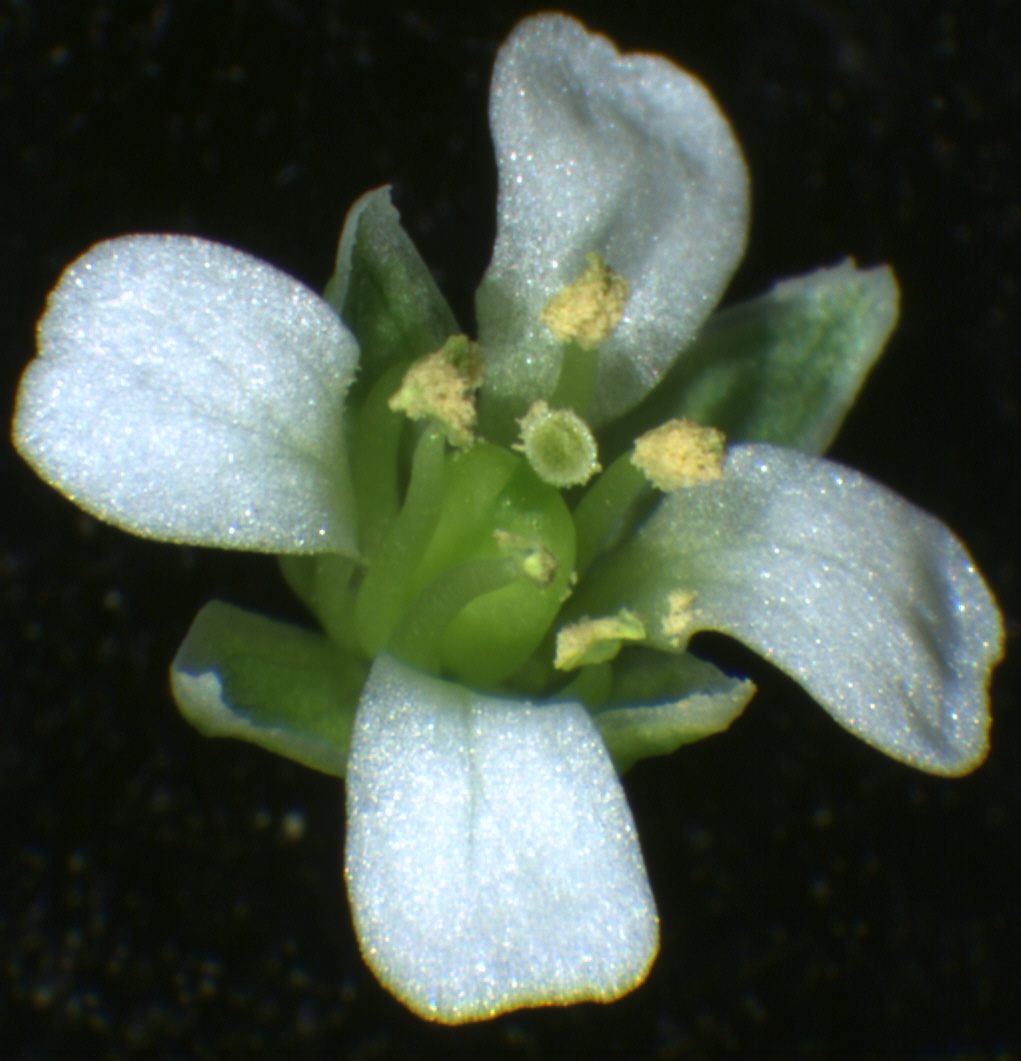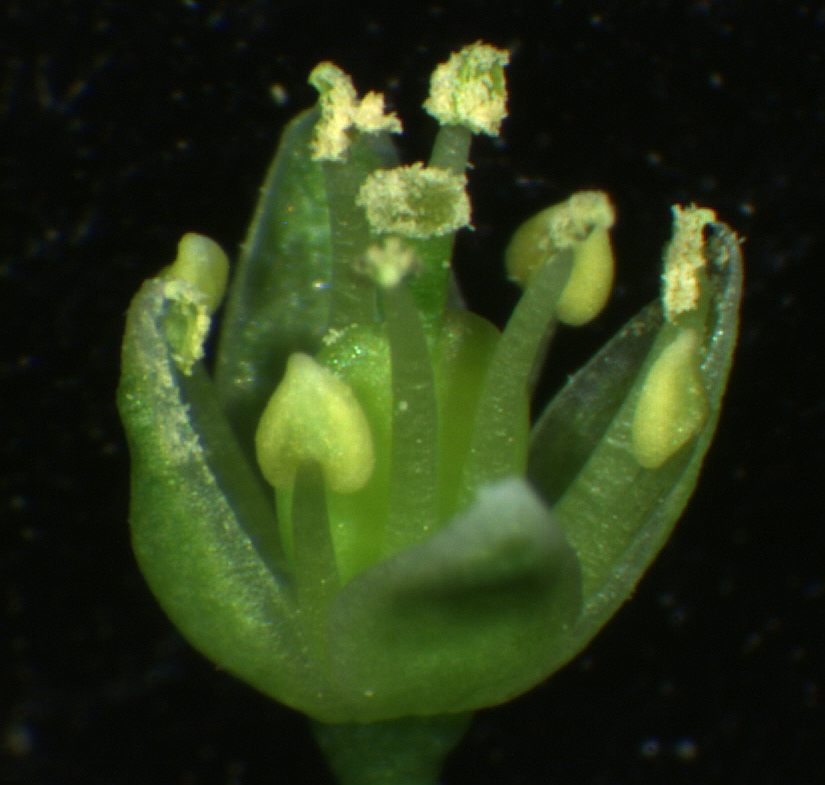Analysis of a natural population of a floral homeotic mutant of shepard´s purse (Capsella bursa-pastoris)
Steffen Hameister, Barbara Neuffer, Günter Theißen
In several genera within the Brassicaceae family quite a few evolutionary tendencies can be observed, which are possibly involved in speciation. “Key innovations” such as polyploidisation, breakdown of self-incompatibility or the reduction or total loss of petals are common trends within the family. Especially because those partly strong variations appear in wild populations, they hint a powerful tool for investigating so called “speciation genes”.
Such a naturally occuring variation of the shepherd´s purse Capsella bursa-pastoris defined through an abnormal development of floral organs is the centre of our studies. This variation was first described in the early 19th century and is characterized by petals transformed into stamina. Developing a second whorl of stamina instead of petals leads to a decandric flower shape.
 |
 |
||
| Wildtype flower | Decandric flower |
Fieldstudies and climate chamber progenies apparently revealed no lack of fitness in spite of the intense phenotypic aberration in contrast to the wildtype. For this reason a promising model system seems to have been identified, which is going to be studied and established from molecular level up to field biology within this project.
In
our studies we focus especially on the chromosomale localisation of the
presumable singular locus which is responsible for the loss of petals. Our
test population is a crossing, in which one parent shows a distinct decandric
phenotyp. Via selfing a F2-mapping generation was obtained
(University of Jena). Several molecular markersystems, such as AFLPs, RAPDs,
microsatellites and isozyme are used. Conducting a linkage analysis with these
markers, we aim to generate a linkage map to the Arabidopsis
thaliana genome. Our cooperation partners in Jena are trying to clone the
possible locus, using a combination of candidate gene approaches and map based
approaches.
Using molecular markers, further investigations will be carried out to reveal whether the decandric variation of yet known habitats has arised once or several times independently .
Extensive isozym analysis of more than 300 individuals from at least 15 sub-populations of wildtype and decandric plants from Rheinhessen are being used for detecting outcrossing rates. These rates are calculated from allel frequencies via F-statistic. As an experimental approach to analyse outcrossing rates and pollination biology we are planning a fieldstudy in the botanical garden of Osnabrueck.
Effects of the decandric flower concerning pollination biology are being investigated in additional fieldstudies at the University of Jena, assisted by further cooperation partners in Halle.